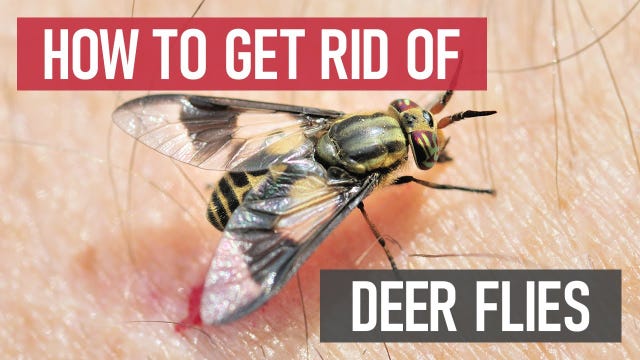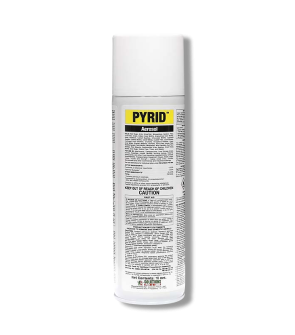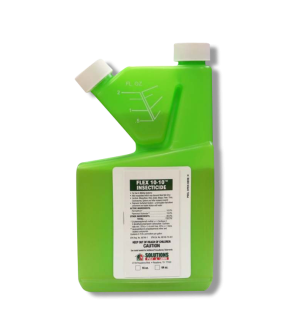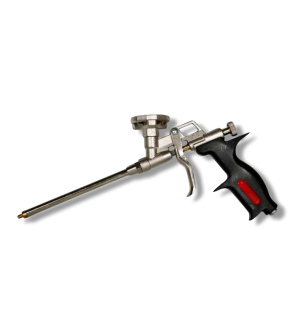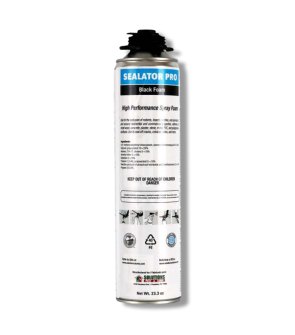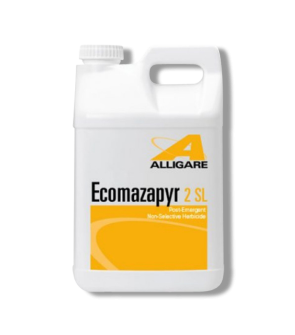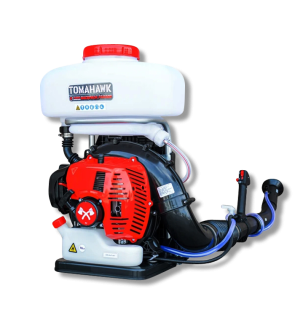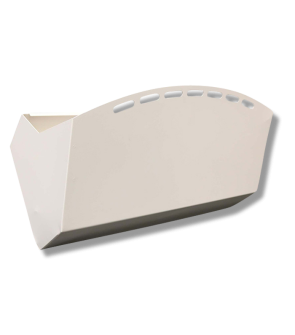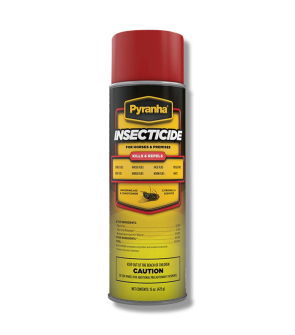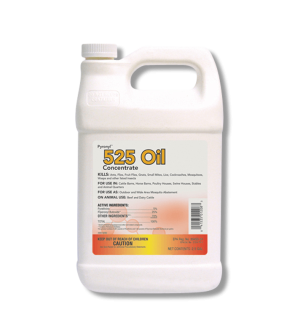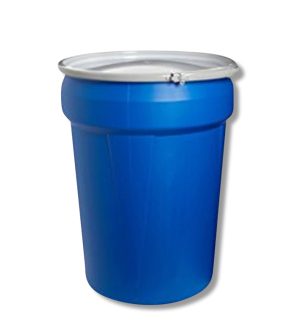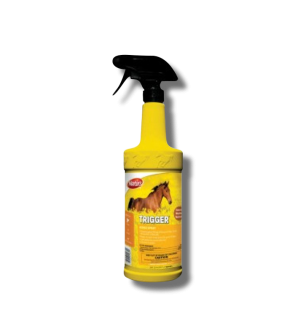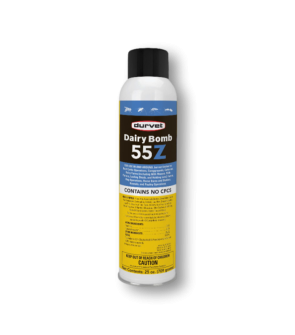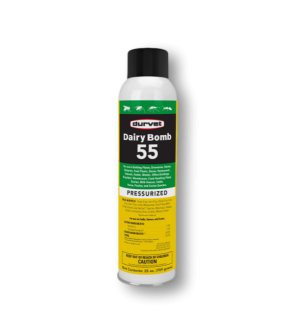Gain access to personalized product screening, the best pricing, rewards, and more!
Most Effective Products
Deer Fly Control: How to Get Rid of Deer Flies
This page is a general deer fly control guide. Using the products and methods suggested, you will get control of deer flies. Follow this guide, use the recommended products, and we guarantee 100% control of deer flies.
Many homeowners who work or spend time outside know when summer is here with the presence of painful bites, especially from deer flies. These pests are common throughout the United States, particularly in the southwest. Like horse flies, they have razor-sharp mouths that inflict quite a bit of pain and blood spillage. Though horseflies and deer flies belong to the Tabanidae family, they are each their species. Deer flies are in the genus Chrysops, whereas horse flies are in Tabanus.
Although their name suggests they feed on deer, this pest feeds on various hosts, including people or cattle. While the males feed on plant nectar and pollen, the female deer fly is focused on ingesting blood to provide the nourishment needed to produce her eggs. These aggressive eaters are hardly discouraged by passing people or animals and will bite multiple times until they attain enough blood.
Numerous populations of deer flies can interrupt grazing for livestock animals and make it hard for homeowners to enjoy their yards with these painful attacks. In addition to blood loss, these pests can transmit diseases from infected to healthy animals. To get rid of deer flies plaguing your yard and animals, follow the steps and recommended products throughout this easy-to-use DIY guide.
Identification
Before proceeding with treatment, you must identify and ensure you are facing a deer fly infestation and not another kind of fly. Careless identification can lead you to use the wrong or ineffective insecticides, which can waste time and money. Here are some key characteristics of deer flies to learn to differentiate them from horse flies and other flies.
- Deer flies are smaller than horse flies yet larger than house flies at 8 millimeters long. Horse flies are larger at 16 millimeters. Another way to distinguish between the deer flies and horse flies is to observe their wings. Deer flies have mottled wings with dark patches, while horse flies have clear wings.
- Large flies with broad bodies and bulging eyes that are patterned gold or green.
- Large and thick three-segmented antennae have their thorax and abdomen covered in fine hairs.
- Their colors vary from yellow to yellow-brown to brown. They have bee-like stripes running across their thoraxes and black patterning along their abdomens.
- Female deer flies have large, prominent mouthparts that have a scissor-like appearance to cut skin to feed. Only the female deer flies will bite and feed on blood; male deer flies feed on plant nectar and pollen.
- Lay large batches of 100 to 800 eggs either in a single layer or in 3 to 4 high tiers. The eggs are cylindrical in shape and white in color, but they gradually darken to gray, brown, or black.
- Deer fly larvae are fairly straight and worm-like in shape with tapered ends. They have 11 to 12 segments in the body, are legless, and are tan, white, or brown. They are 3/4 to 1 1/2 inches long, smaller than horsefly larvae.
Use the image and description above to help you correctly identify a deer fly. If you are unsure of the pest infesting your livestock and property, contact us by phone, email, or in person at one of our store locations. A photo or sample of the pest in a sealable plastic container or bag can help with proper identification.
Inspection
Once deer flies have been confirmed on your property, you can proceed with the next phase of control, which is inspection. During this phase, you will focus on finding areas where deer flies are most active and the conditions allowing the pest to thrive.
Where to Inspect
Deer flies need water in order to breed and lay their eggs, so they like moist, sunny areas like swamps, edges of water bodies like ponds and streams, and neighborhoods or suburbs near wooded, wetland environments.
In more rural areas, they are most active in fields and pastures near water sources for livestock. Usually, deer flies will not enter barns, stables, and other shaded areas due to difficulty seeing dark, moving objects for them to feed upon.
Deer flies lay their eggs on grasses and vegetation like cattails or sedges around ponds or other water sources. In their adult form, the deer fly rests on shrubbery or tall grasses until it finds a person or small to large mammals like horses, cattle, deer, dogs, or birds to feed on.
What to Look For
Deer flies only feed during the day and focus on animal or people's movement and carbon dioxide output.
When selected, the female deer fly will fly in a fast, noisy circle around their selected victim. Besides the noise, these pests can be noticed by their painful bites.
When the deer fly bites an animal, it can be seen with a consistent tail and head swishing to remove these biting flies. Once bitten, these pests can leave behind red bumps or welts.
In contrast to horse flies, which bite mainly around the legs of stationary hosts, the deer fly will bite on the shoulders, head, and neck areas of moving hosts.
Treatment
Wear personal protective equipment (PPE) such as long-sleeve shirts, long-sleeve pants, and a hat, as bites from deer flies are painful and can cut skin.
Deer flies are most active from May to September when the weather is warm and humid.
To get rid of deer flies, you will need to implement several yard maintenance tasks and fogging with a residual insecticide prior to or at the beginning of periods of activity.
Fogging or any pesticide control with common pyrethrin or pyrethroid insecticides will be useless without cultural control.
Step 1: Mow Tall Grasses
The first step is to ensure your grass is maintained at a proper height. At night, deer flies will rest on taller grass blades when there is no host to feed on.
When grass becomes too tall, mow away no more than 1/3 of the turf’s height. Different grasses have different height requirements, but generally, grasses should be mowed to a height of 3 inches.
Adjust the mower blades on a higher setting when mowing during the summer. This will help limit places for deer flies to rest or hide on your property.
Step 2: Fog with Flex 10-10
Once your grass has been addressed, you will need to perform a fog or mist application with a product like Flex 10-10.
Flex 10-10 is an emulsifiable concentrate that kills deer flies and insects as a fog application with ULV cold foggers, fog/mist generators, or a backpack sprayer. Made with 10% permethrin and 10% piperonyl butoxide and classified as a pyrethroid chemical, this product will affect the deer flies nervous system, leading to paralysis and death.
To control deer flies on your property, apply this product as a space spray application. You can use ULV fogging equipment like a backpack fogger.
Calculate the square footage of the treatment area to determine how much Flex 10-10 to use for your treatment area and sprayer. To do this, measure the treatment area's length and width in feet, then multiply (length X width = square footage).
For low infestations of deer flies, dilute 4 teaspoons of Flex 10-10 per gallon of water (1:200) to make a 0.05% permethrin ready-to-use product.
For severe infestations of deer flies, use 8 teaspoons of Flex 10-10 per gallon (1:100) to make a 0.1% permethrin ready-to-use product. For a 1:100 dilution, mix 11.6 fl. oz. of Flex 10-10 per 10 gallons of water.
After mixing, apply the mist. Direct the spray towards turf, horse barns and cow barns, stables, poultry houses, and other animal quarters.
Do not apply this mist over grass used for grazing, over any bodies of water, or where food or feed is stored or prepared.
Do not allow people or animals to enter the area until the mist has completely settled and the mist has dried.
When used in dairy barns or facilities, Close milk bulk tank lids to prevent contamination from spray and dead or falling insects. Remove or cover milking utensils before application. Wash animals' teats before milking.
Step 3: Install the Solutions Uplight Fly Light

This light trap uses UV bulbs that lure flies to its replaceable glue board. Installation is simple.
Set the trap to stand on its own or hang it on a wall where deer flies are active, and plug it in. Replace the glue boards when they become full or after every 90 days.
Step 4: Spray Pryid Insecticide Aerosol

Pyrid Insecticide Aerosol is an aerosol insecticide that’s great for knocking down flying insects.
Apply this product as a space spray at a rate of 1 to 3 seconds of spraying per 1,000 cubic feet.
When deer flies are resting on leaf surfaces, spray the space above and allow the droplets to drift down on top of them.
Do not spray in the direct vicinity of people or animals. Flies that make contact with the aerosol will be knocked down immediately.
Prevention
After eliminating the deer fly infestation, you must ensure these pests do not return. Deer flies are persistent pests that will seek the smallest opportunity to reinvade your property, so diligent preventative measures are needed. Otherwise, pesticides are not completely effective. Remember the following preventative practices to ensure deer flies do not return to your yard.
- Eliminate weeds with appropriate herbicides and mow when turf exceeds 3 inches in height to eliminate hiding places for adult deer flies. Prune overgrown foliage and shrubbery near your home and barn, as these could also be used as resting sites for this pest.
- Get rid of aquatic weeds like cattails around the edges of private ponds with aquatic herbicides like Ecomazapyr 2 SL Herbicide. This will limit habitats and feeding sources for deer fly larvae, thus eliminating future generations. Ecomazapyr 2 SL Herbicide is a non-selective herbicide that will control weeds on both land and aquatic areas. As a spot treatment, use 0.72 to 1.45 fl. oz. of Ecomazapyr 2 SL Herbicide per 1 gallon of water per 1,000 sq. ft. Mix and apply this product with a handheld pump sprayer. Use a fan or cone spray pattern to ensure the leaves are fully coated, and spray weeds to the point of wet but not runoff. Be sure to spray on calm days when temperatures are not too hot and when wind speeds are low to minimize drift. Make sure the pond water is still at the time of application. Consult local state fish and game agencies and water control authorities before applying this product to public water. Permits may be required to treat such water. Treat the water in strips to avoid oxygen depletion due to decaying vegetation. Oxygen depletion may result in the suffocation of some sensitive aquatic organisms. Do not treat more than one half of the surface area of the water in a single operation and wait at least 10 to 14 days between treatments. Begin treatment along the shore and proceed outward in bands to allow aquatic organisms to move into untreated areas.
- Limit moisture in your yard by covering muddy areas and holes in the turf with dirt or other organic material until dry and filled. If the land is creating gaps or holes for water to gather, level it.
- Build sheltered areas like barns, sheds, and dog houses or place dense trees out in fields for animals to escape the sun and provide shaded areas since deer flies commonly avoid these sites.
- Remove ponds, water bodies, or other swampy areas in or nearby your home and barn to limit the moisture needed for deer fly larvae. If these sites cannot be removed, then be prepared to relocate your animals.
- If deer flies have become a problem indoors, use exclusion methods to block off potential pest entry points. Repair tears in window and door screens, and ensure all windows and doors close properly. Cracks and crevices around your structure should be sealed with caulk or an expanding foam like Sealator Pro. Look for thin cracks and openings in the foundation, around window and door frames, and utility penetrations.
- Apply fogging treatments with Flex 10-10 in labeled areas where deer flies swarm and reapply as needed or before periods of activity.
Key Takeaways
What are Deer Flies?
- Deer flies are relatives of the horse fly and are known as true flies that vigorously feed on the blood of animals and people.
How to Get Rid of Deer Flies
- To kill deer flies on your property, you will need to remove any overgrown foliage and weeds in your yard and around your pond or other water body sources. Mow your yard for tall grass blades exceeding 3 inches in height and remove aquatic weeds around your water body edge with Ecomazapyr 2 SL Herbicide. Once these environments are taken care of, you will then apply Flex 10-10 as a fog treatment.
Preventing Deer Flies Reinfestation
- Repel deer flies from your yard and livestock by mowing, aquatic weed treatment with Ecomazapyr 2 SL Herbicide, limiting moisture in property by sealing holes or addressing the cause of flooding, building sheltered areas that provide shade for animals, and continual applications of Flex 10-10.






